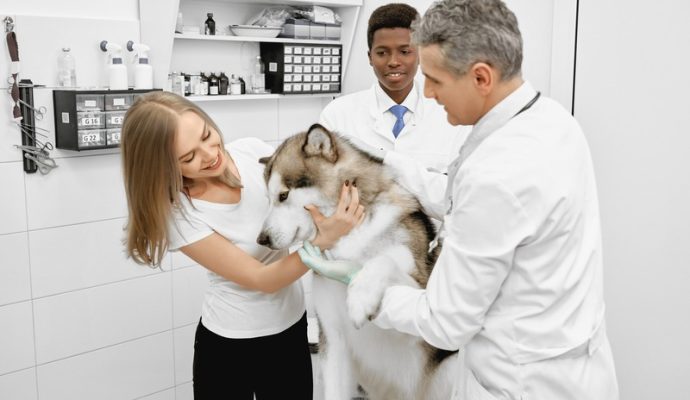In dogs, cats, and ferrets, heartworm disease causes severe lung disease, heart failure, organ damage, and death. Dirofilaria immitis, a parasitic worm, causes it. Mosquito bites disseminate the worms. The dog is the sole host, which implies that the worms grow, mate, and reproduce solely within the dog. The mosquito serves as an intermediate host, where the worms can live for a short period before becoming infective (able to cause heartworm disease). Adult worms live in infected animals’ hearts, lungs, and blood vessels.
What is the heartworm’s life cycle?
In order to infect the dog, the heartworm parasite must first infect a mosquito. Mosquitoes spread heartworm. Up to 30 different mosquito species can spread heartworms.
A female mosquito bites an infected dog during a blood meal, swallowing microfilariae. Microfilariae live in the mosquito’s intestines for 10-30 days before entering its mouthparts. They are infective larvae that can mature in a dog at this stage. Infective larvae enter the body when a mosquito bites a dog.
Where can you find heartworm disease?
Canine heartworm disease is widespread all over the world. It was originally restricted to the United States’ southern and southeast areas. The greatest number of reported instances remain within 150 miles of the Gulf of Mexico and Atlantic Ocean coasts and along the Mississippi River and its tributaries. On the other hand, the disease is spreading and is now present in most of the United States, including California, Oregon, and Washington.
What is the mode of transmission of heartworm disease?
The disease is not transmitted directly from dog to dog because transmission requires an intermediate host in the mosquito. As a result, disease transmission occurs concurrently with mosquito season and continues throughout the year in many places of the United States. The prevalence of heartworm disease in any given area is directly related to the number of infected dogs and the length of the mosquito season. The “their dental page” section of a vets website contains information about additional veterinarian procedures for your dog.
What effect do heartworms have on your dog?
In most cases, dogs do not show clinical signs of sickness for several years. As a result, dogs aged two to eight years are the most commonly affected. Because it takes 5 to 7 months for microfilariae to mature into adult heartworms after infection, the disease is uncommon in puppies under one year old. Unfortunately, by the time clinical symptoms appear, the disease has often progressed. That is why it is critical to take your dog to places like Park Animal Hospital for regular checkups.
How is heartworm illness diagnosed?
Heartworm disease is frequently detectable by simple blood testing according to simi valley veterinarians. To assess therapy safety in heartworm-positive dogs, further testing is frequently required. Some or all of the following tests are recommended before beginning treatment.
Serology of adult heartworm antigens A blood sample is used in this test. See “Testing for Heartworm Disease in Dogs” for further information. X-rays of the chest (X-rays). Before beginning heartworm treatment, radiographs are frequently recommended to assess the extent of heart and lung damage.
Examinations (complete blood cell count, serum biochemistry). Blood testing before heartworm therapy may be recommended to assess heartworm-associated organ damage.
How is heartworm disease treated?
Melarsomine dihydrochloride is an arsenic-containing drug approved by the FDA to treat adult heartworms in dogs. It is injected deeply into the back muscles of dogs with heartworm disease that has been stabilized at classes 1, 2, or 3. Advantage Multi for Dogs (imidacloprid and moxidectin) is another FDA-approved drug that removes microfilariae from a dog’s bloodstream.
Prevention Is Always Better Than Cure
For heartworm prevention in dogs, the FDA has approved several medications. All of these drugs must be prescribed by a veterinarian. The majority of products are given once a month, either as a topical lotion applied directly to the skin or as an oral pill. Oral tablets come in both chewable and non-chewable varieties. A single product is injected under the skin every six to twelve months, and a veterinarian can only give the injection.




